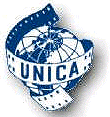
MEMBRE DU CONSEIL INTERNATIONAL DU CINÉMA ET DE LA TÉLÉVISION A L'UNESCO
UNICA NEWS
Issue 4 - 2001
Articles
IAC's UNICA pages |
UNICA
website
Articles and reports:
French |
German ||
Announcements |
International Agenda
| Front page
 |
ORGANE OFFICIEL DE L'UNION INTERNATIONALE DU CINÉMA
NON PROFESSIONEL MEMBRE DU CONSEIL INTERNATIONAL DU CINÉMA ET DE LA TÉLÉVISION A L'UNESCO
UNICA NEWS |
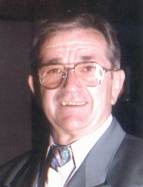 The
UNICA 2001 Congress, a great success.
The
UNICA 2001 Congress, a great success.
"A UNICA of Meetings"
Ladies and Gentlemen, dear film friends,
The UNICA 2001 Congress in Tallinn now belongs to the past, yet none of us will quickly forget it! It had excellent organisation and a very competent technical team who projected the kind of pictures that directors dream about, a presentation without the slightest hitch. I take this opportunity to offer sincere thanks once again to Jaak Järvine and the organising committee for what they gave us and for their first-rate organisation. For us, it was a very pleasant, varied and interesting UNICA. I am sure that all participants went home with happy memories of the event and that this UNICA will long be fondly remembered.
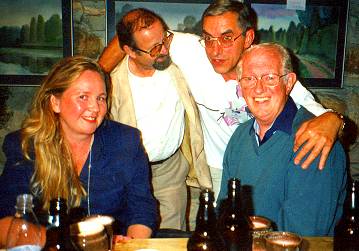
Some of the Jury: Maju Leppänen (FIN), Reinhard Steininger (AUT), Jef van Gompel (BEL) and Reg Lancaster (GBR) |
In Tallin we put to the test the idea of having a jury discussion after
presenting each national programme. This discussion with the jury took about
an hour after each session, bearing in mind that, after listening to the
remarks made by the jury, the audience was invited to express an opinion.
It was also an opportunity to create contacts between jury members and directors.
In every case these discussion forums were well attended.
The introduction of the category "film school films" was also a success. These movies were discussed and evaluated by the jury separately; prizes were also awarded separately, so that these films were not really competing with traditional "amateur films". This procedure was also reckoned by everyone to be a good idea. |
We were able to complete the General Meeting in two hours. All the reports submitted by Committee members were adopted without opposition. During the examination of financial reports, the question was raised of how the accounts should be presented in the future. They are currently prepared in CHF (Swiss Francs). We discussed if it might be more convenient to adopt the EUR (Euro). The Committee had previously given some thought to this question. It was accepted that, as a provisional solution, the accounts for 2001 could be submitted in both CHF and EUR. We will then see, when we come to the next General Meeting what the most convenient solution is.
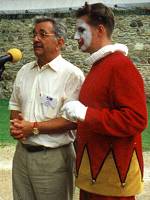 The "big" issue for the General Meeting was undoubtedly the
fall-out from the South-African Federation having informed the committee
in June that it was no longer in a position to organise the UNICA 2003 Congress,
despite having had the go-ahead for it. The planned meeting of the UNICA
Committee in South Africa (September 2001) was also cancelled. We immediately
got in touch with various national federations. Rolf Mandolesi investigated
options in Italy (Merano) and Poland is also checking on the possibility
of filling the gap for 2003. We expect an answer in the next few weeks. But
there is an alternative : what about a UNICA Congress in your country ...?
We thank you in advance for your efforts.
The "big" issue for the General Meeting was undoubtedly the
fall-out from the South-African Federation having informed the committee
in June that it was no longer in a position to organise the UNICA 2003 Congress,
despite having had the go-ahead for it. The planned meeting of the UNICA
Committee in South Africa (September 2001) was also cancelled. We immediately
got in touch with various national federations. Rolf Mandolesi investigated
options in Italy (Merano) and Poland is also checking on the possibility
of filling the gap for 2003. We expect an answer in the next few weeks. But
there is an alternative : what about a UNICA Congress in your country ...?
We thank you in advance for your efforts.
The UNICA 2001 Congress belongs to the past. Long live the UNICA 2002 Congress that will take place in Luxembourg from August 23 to September 01, 2002. The Luxembourg delegation made its presentation with panache and we are sure that this event will be another great success. Make a note of the dates right now!
Best wishes
Yours Max Hänsli
Pursuant to the power given by this year's General Assembly in Tallinn, Estonia, the UNICA Committee is pleased to inform you that the application of POLAND to organise the 2003 UNICA Congress has been accepted. We will inform you as soon as possible about the dates and the venue. Make a reservation now for your 2003 holiday in Poland, it will be worth while!
- Max Hänsli, President.
Miette Verlinder (BEL) |
Thomas Lindh (SWE) |
Pierre Michel (FRA) |
Henk Verheul (NDL) |
Heidi Lind (FIN) |
Martin Kochloefl (DEU) |
ORGANISATION COMMITTEE FOR UNICA 2002 LUXEMBOURG
| President: Georges Fondeur 49, rue Laach L - 6945 NIEDERANVEN tel.: + 352 347080 fax: + 352 223465 mobile: + 352 91 347080 e-mail: fondeur@vo.lu
Secretary: Louis Schmitz |
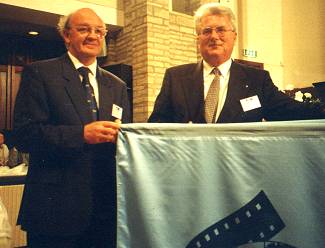 |
Members: Claude Charnaut, Yvo Fumanti, Robert Grossklos, Roger Hansen, Robert Hohol, Marco Klein, Emile Lorenzini, Jorge Marques, Jean-Claude Metz, Nico Sauber, Jeannot Stirn
LUXEMBOURG - HISTORY OF A SMALL COUNTRY
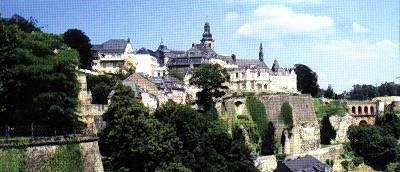
A visitor to the Grand-Duchy of Luxembourg, one of the smallest independent states in the world, may ask how this country came into being and why a population comparable in number to an average European city has developed an unmistakable culture, language and identity in such a limited territory. The amazing history of this little country answers these questions and even the most superficial observer will find here a tormented past and, perhaps, parallels and common milestones in the history of his own country.
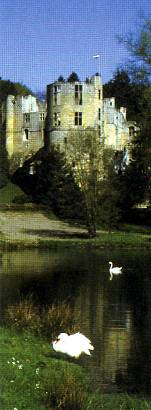 The name Luxembourg goes back to the year 963, when Count Siegfried
came into possession of Lucilinburhuc, the little castle high on the rocks
of the present capital. Between 963 and 1443, Luxembourg was an independent
country, then a duchy in the German empire. In the 14th century, emperors
and kings came from the House of Luxembourg: Henry VII, Count of Luxembourg
and Emperor; John the Blind, Count of Luxembourg and King of Bohemia; Charles
IV, Wenceslas II and Sigismund - Emperors and Kings of Bohemia.
The name Luxembourg goes back to the year 963, when Count Siegfried
came into possession of Lucilinburhuc, the little castle high on the rocks
of the present capital. Between 963 and 1443, Luxembourg was an independent
country, then a duchy in the German empire. In the 14th century, emperors
and kings came from the House of Luxembourg: Henry VII, Count of Luxembourg
and Emperor; John the Blind, Count of Luxembourg and King of Bohemia; Charles
IV, Wenceslas II and Sigismund - Emperors and Kings of Bohemia.
For a thousand years, Luxembourg was an occasional plaything and bone of contention for the European dynasties: courted and fought over for its central location and its powerful fortress. From 1443 to 1815, the Duchy submitted to foreign sovereigns: the House of Burgundy 1443 - 1506, Spain 1506 - 1684, France 1684 - 1697, Austria 1714 - 1795 and a second time under French rule 1795 - 1814 when Luxembourg became a department of France. After the defeat of Napoleon I in Russia, the Allies at the Congress of Vienna in 1815 gave Luxembourg the status of an independent Grand-Duchy, "personal property" (no less) of the Dutch king and at the same time part of the German Confederation.
It was only in the year 1839, with the Treaty of London, that the Grand-Duchy of Luxembourg was born as a truly independent and sovereign state. Thrice the territory of the Grand-Duchy has been divided and during the First and Second World Wars, its independence and neutrality was ignored. But from the ups and downs of its tormented history, a nation was born and a people formed, faithful to their independence, to their sovereigns and to the motto "Mir wölle bleiwe wat mir sin." (We want to stay what we are.)
The Grand-Duchy of Luxembourg is today: a free country, with open-minded and open-hearted people, experienced in the community of nations and an integral part of the European Community, and yet unmistakable in its character and originality.
AUTHENTICITY IN NON-PROFESSIONAL FILMS
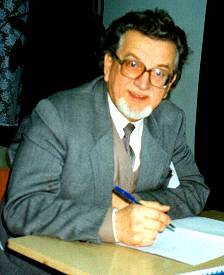 The history and development of human culture and various branches
of art are closely related to the urge to offer a realistic expression of
the artist's vision and experience. The most brilliant periods of Antiquity
and Renaissance, the golden age of sculpture and painting, those flourishing
times for plastic arts, are testimonies to this tendency for the artist to
produce a faithful representation of human beings, animals, objects and
landscapes in his/her environment, together with their appearance and movements,
and to capture their true shapes and forms.
The history and development of human culture and various branches
of art are closely related to the urge to offer a realistic expression of
the artist's vision and experience. The most brilliant periods of Antiquity
and Renaissance, the golden age of sculpture and painting, those flourishing
times for plastic arts, are testimonies to this tendency for the artist to
produce a faithful representation of human beings, animals, objects and
landscapes in his/her environment, together with their appearance and movements,
and to capture their true shapes and forms.
It is only about a hundred years ago that the art of representing the environment became subjective and turned away from objective reality as it was perceived by "common" people. It adopted a willingness to distort shape and colour so as to reflect the artist's mood and experience. The impressionistic school in literature, music and in plastic art, on the one hand, was a way to rebel against academia, and on the other hand, it offered the chance to present an original interpretation of the real world. This corresponded, not only to a quest for authentic forms, but also a search - somewhat artificial at times - for original styles different from the stereotyped expression that had hitherto prevailed.
The eagerness of many artists to differentiate themselves from their predecessors sometimes engendered impressive works which became milestones in the history of art. More often than not, this drive produced works that were merely strange, eccentric, remarkable. They were remote from objective reality, abstract and somewhat disfigured.
When we name artistic trend-setters, we often forget that only a few have entered history and passed the test of time. We neglect the fact that most such innovators have sunk into oblivion and are scarcely remembered. Sometimes their artistic movement has completely disappeared under a thick layer of dust.
And yet, the last century has exerted a deep influence on conscious artistic taste in general. Art followers admire Greek sculpture and Renaissance masterpieces in art museums and galleries. At the same time, we accept to some extent deformation and subjective interpretation, provided it is not excessive and shocking. But we should not forget that there is also a large number of snobs who want to pass themselves off as connoisseurs of modern art. They repeat other people's opinions, mostly the opinions of those artists who impressed them by seeming to have access to spheres which are not their own. According to these snobs, admiration for opaque art gives you the status of an intellectual, raises you above the commoners and makes you a member of a forward-looking intelligentsia.
In this speculation, I will be content to deal with the topic announced in the title and will skip extreme situations: on the one hand, unpolished naturalism that insists on depicting every detail; on the other hand, unpolished expressionism. Of course we all have a right to experiment, to look for new solutions, to try implementing innovative ideas. But to create an outstanding work, requires above all: talent - something that very few people actually have. This is why I turn away from the various "isms" and "anti" theories (including "anti-editing") and am content with offering some remarks that might be of use to non-professional film-makers.
Though it has its roots to a large extent in drama, film differentiates itself from that art primarily by its relationship to reality. In theatre, right from the start, we depend on conventions. Thus we accept stage conventions, including the décor, costumes, characters and the art of acting on stage. By contrast, we consider that this stage dimension is not acceptable in film. Where theatre goers will not rebel against painted mirrors, cardboard containers, chipboard tanks; and happily accept actors eating from empty plates or drinking out of empty cups … such conventions are not acceptable on the screen. There they provoke mockery, irritation and even ridicule. Film viewers demand realistic pictures and make a point of noting any flaws and errors. There are hundreds of anecdotes that go the rounds among cameramen and others, such as Caesar's wrist-watch, TV aerials in a medieval city, cars in a historical film and other gaffes.
Ethics represents a problem in itself for film makers and there is no room for falsification or untruth. Filmmakers do have the right to apply distortions of time and space, to change reality and re-interpret it from various artistic, social and political points of view; but, in the case of a documentary, popular science or educational film, there is no excuse for warping truth. If you show an eighty-year old playing the role of a centenarian after a very serious surgical operation (when in reality the patient has passed away!) this is cheating the spectator just as much as giving the wrong resilience index for a specific material or false statistics about agricultural production. Just as there are ethical rules for lawyers and doctors, filmmakers also commit themselves to abide by ethical norms whose limits are set by individual moral standards.
When evaluating authenticity in a non-professional film, in particular in the case of an experimental or a fiction film, we should be careful not to take it too far. In such cases we should impose no limits on imagination and creativity whose scope and style depend on the author's talent and taste. We should also warn that naturalism, which is prone to recording things indiscriminately, without prior evaluation or interpretation, sometimes over-emphasises a point to such an extent that it becomes crude.
However we look at things and analyse them, the basic criteria are still the impression of beauty, ethical awareness and good taste. These are the best testimony to the innermost values and talent of a genuine creator.
- Stanislaw Puls (POL), UNICA Councillor
GRANTS FOR MOVIE MAKERS - Letter from the Minor Foundation
Dear UNICA News, The "Minor Foundation" may help realise new film projects. We would be grateful if you inform film makers within your network about the foundation. We grant funds for innovative and untraditional environmental projects. The "Minor Foundation for Major Challenges" is a non-profit foundation that gives financial support to projects aimed at limiting human-created, global climate problems. Any project whose objective is to influence public opinion and change attitudes to these problems is eligible for support. In 2001 approximately NOK 1.5 million is available for distribution. More information about the Minor Foundation and the application can be found on our internet site www.minor-foundation.no.
Rune Andreassen, The Minor-Foundation |
UNICA to be represented on the panel of judges of the "Europe Youth Prize for photo and film 1965-66"
On 25th October 1963, the European Committee unanimously decided to invite the President of UNICA, Mr. Wilhelm Herrmann, to act as a member of the judging panel for the European Youth Prize. This competition will take place on 31st March 1966 in Brussels. The object of the competition is to award prizes to the best work in black-and-white and colour photography submitted from countries of the European Economic Community. During this event a Youth Film Competition will also be held, during which the best and most typical amateur films among the forty-eight to be submitted by young people will be chosen.
"The World of the Amateur Film Maker Official review of UNICA, March 1966 "
63. UNICA 2001 TALLINN (EST) - AWARDS
The most interesting national programme: Czechia
Fellini Prize CICT: DESIGNER BABIES - Iain Gaffney (GBR)
Gold Medal: SINAMA SAG - Shahed Ahmadlou (IRN)
Silver Medals:
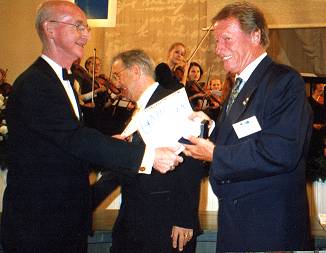
Bronze Medals:
Filmschool Gold Medal: MIJN EERSTE SJEEKSPIER - Douglas Boswell (BEL)
Filmschool Silver Medals: VIIMEINEN PÄÄSIÄINEN - Sari Antikainen (FIN); BERLINO ´38 - Gaetano Maffia (ITA)
Filmschool Bronze Medal: 44 - Adalberto Leibovich (ARG)
Jeunesse:
1st AM ENDE DES SEINS - Gregor Theuss (DEU)
2nd SOLITAS - Marko Mäkilaakso (FIN)
3rd DODIR - Jelena Nazor (CRO)
World Minute Movie Cup:
1st DIFFERENT WORLDS - Gunnar Nilsson (SWE)
2nd BROKEN LOVE - Louis & Anja Smits (NLD)
3rd FRIENDLY - Eve Ester & Tonu Aru (EST)
3rd AT LAST - Videofilmer Senftenberg (DEU)
Jury:
Jef van Gompel (BEL) jury chief, Tanja Golic (CRO), Reg Lancaster (GBR), Reinhard Steininger (AUT), Maju Leppänen (FIN), Peter Tammisto (EST), Vaike Kalda (EST).